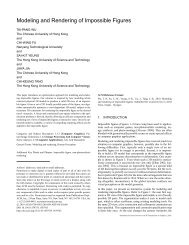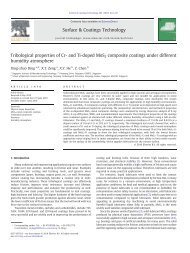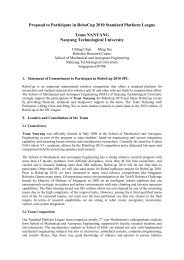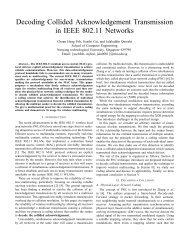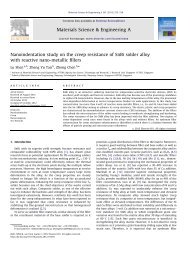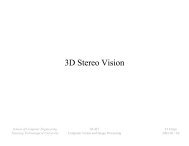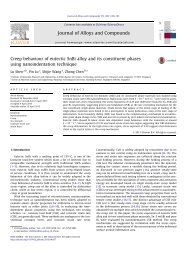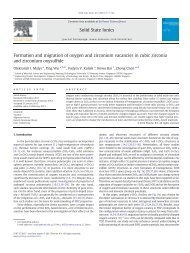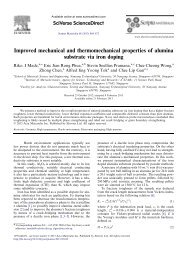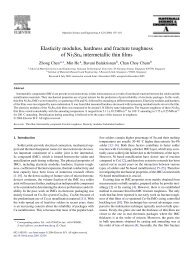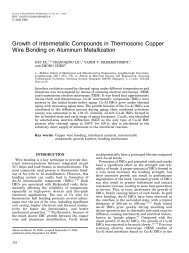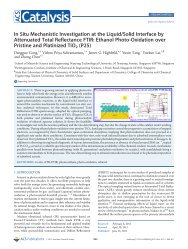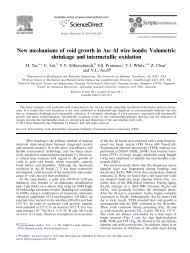ptdist - Nanyang Technological University
ptdist - Nanyang Technological University
ptdist - Nanyang Technological University
Create successful ePaper yourself
Turn your PDF publications into a flip-book with our unique Google optimized e-Paper software.
• First of all, we properly assign Quin-tiles available in our tile set onto the Quin-tile slots<br />
on the dual surface. Since conventional surface parameterization methods normally produce<br />
very few 5-corner (as well as 6-corner) junctions (as compared to 4-corner junctions) on<br />
the surface parameterizations, we normally do not have many Quin-tile slots (as well as<br />
Sex-tiles) on the dual surface, as compared to Quad-tile slots. Therefore, a relatively small<br />
amount of Quin-tiles (and Sex-tiles) are sufficient in our stochastic tiling. Furthermore, in<br />
extreme cases where Quin-tile slots dominate, we can make use of one or two corner colors<br />
to generate a full set of Quin-tile set (See Table I); then, we can still guarantee an agreeing<br />
tiling.<br />
• After arranging Quin-tiles, we randomly assign colors and orientations to the remaining<br />
corner tile slots on the dual surface. Since we have a complete set of Tri-tiles and Quad-<br />
tiles, we do not need to constrain the corner tile assignment as we did for Quin-tiles.<br />
• Finally, based on the arranged corner tiles, we can lookup related edge tiles and then Quad-<br />
tiles and Tri-tiles to fill the remaining space on the dual surface.<br />
In our actual implementation, we develop a tile-reassembling scheme to facilitate the tiling<br />
process. After we generate the whole dual tile set, we expand the region of each interior tile to<br />
include parts of the related corner and edge tiles. Since interior tiles and edge tiles are unique,<br />
given any interior tile, we can uniquely determine its boundary corner and edge tiles, pack<br />
half of the related edge tiles and a quarter of the related corner tiles around it, and generate<br />
a reassembled tile for each interior tile, see Figure 7(c), Figure 8(d), and Figure 8(h) for a<br />
reassembled Quad-tile, Tri-tile, and Quin-tile, respectively. In this way, we can replace corner<br />
tiles, edge tiles, and interior tiles by the reassembled tiles in our implementation, and hence<br />
simplify our data structure, and make the tiling more convenient.<br />
B. Tiling Examples<br />
Figure 9 presents a tiling example to exemplify how we tile a non-planar surface in the form<br />
of a T-shape brick with our dual Poisson-disk tiles. Here we have C = 2 and N = 32, where C is<br />
the number of colors (corner tiles) and N is the point distribution density. In this example, we<br />
can see that we have four Quin-tiles and twelve Tri-tiles, whereas all corner tiles meet exactly<br />
four edge tiles over the entire model surface due to dual tiling.<br />
February 2, 2008 MINOR REVISION<br />
14



